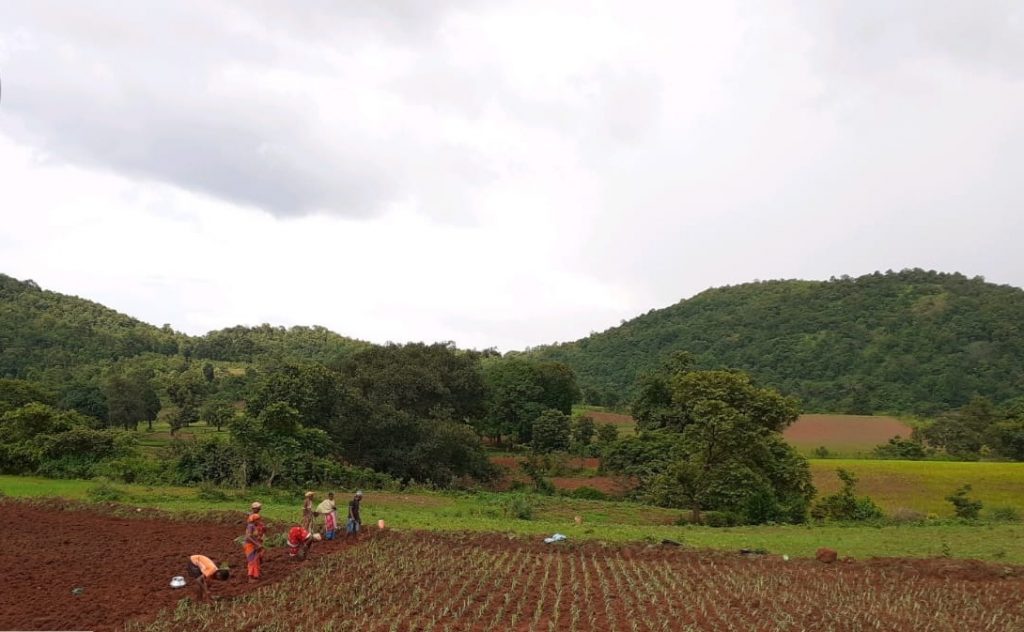Chitakonda: The state government’s Millet Mission aims at fulfilling the nutritional needs of women, expectant mothers and kids so as to fight problems arising out of malnutrition. This mission is successfully taking roots in Swabhiman Anchal (once the cut-off area of Chitrakonda reservoir) in Malkangiri, a report said.
The mission is vigorously being pushed by the women and child welfare department, the agriculture department and Wason organization in the current kharif season.
Under the special programme for its promotion in tribal areas, the crops have been revived. Now it is getting the much-needed attention across the state because of its high nutritional value.
In fact, the nutrient-rich millets were fast fading away from agricultural landscape in tribal pockets, but they are now making a comeback to the scene, thanks to the Millet Mission.
The scheme’s objective was to increase millet production with marketing support and promote millet-based food processing.
For the last three years, a number of steps have been taken to promote cultivation of millets such as ragi, gurji and kosla (small millet), kodo, kangu (foxtail millet) and jowars, which are known as age-old traditional food of the hill dwellers.
Under the programme, improved technologies like line sowing and transplantation are adopted with less seed and root intensification. Farmers are encouraged to cultivate these crops by adopting these methods.
Agriculture Minister Arun Sahu had inaugurated a Millet Mandi at Badapada last year so that farmers can get the marketing facility of their produce. The government expects that millet cultivation will make the farmers financially independent.
In the current kharif season, millets are being cultivated at Chitrakonda, Doraguda, Nuaguda, Gunthawada, Tunnel Camp, Badapadar, Badapada panchyats.
The government has also made input incentives available for farmers.
In fiscal 2019-20, the agriculture department had provided incentive of Rs 600 to Rs 2000 to 1575 millet farmers. These farmers had adopted line sowing and Sri Methods.
Scores of farmers at Doraguda, Badapadar, Badapada and Jantapai had made profits from millet cultivation by selling off 2674 quintals. Millets were sold for Rs 31 per kg.
In 2020-21, over 2500 farmers have cultivated millets in 952 hectares and suan in 304 hectares. For varieties of millet seeds, a nursery has been set up on a hectare of land at Arnabhatta. Farmers have the advantage of picking their choice.
Some farmers said that separating husks from suan is a difficult thing. For that reason, the farmers have to sell their produce to traders at cheap price.
“The rice of suan has a good demand in the market. There is need for a processing unit to produce rice from suan,” some farmers pointed out.
Farmers are also trained on how to prepare bio-compost, organic fertilizers, vermin-compost and natural pesticides.
A step was also taken to preserve some varieties of seeds in the current season.
Millet meals are also being served as ‘khichhdi’ and ‘upma’ under the ICDS and MDM programmes in anganwadi centres and schools in some areas.
Various food items like halwa, vada, dosa, pakoda, biscuits and cakes made from millets are being promoted among urbanites through different events.
“Steps were taken to provide machines to grind millets, produce rice from suan, and prepare biscuits, loaves, cakes and other food stuff from millet flour. This will strengthen the economic backbone of the farmers,” said Kailash Chandra Panda, the executive officer of the Women and Child Welfare Committee.
Tapan Kumar Rath, Suresh Majhi, Labakusha Khemudu and Trinath Khemudu are part of the Millet mission.
PNN
